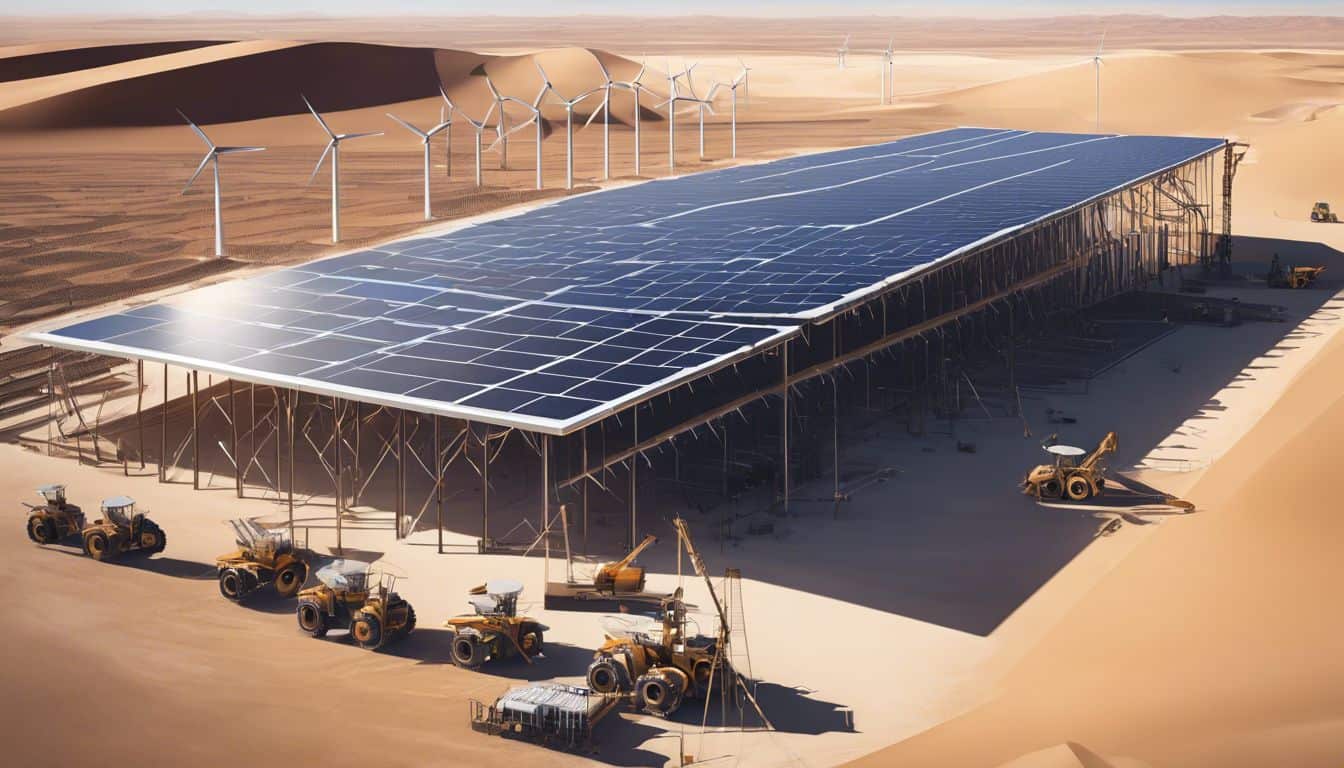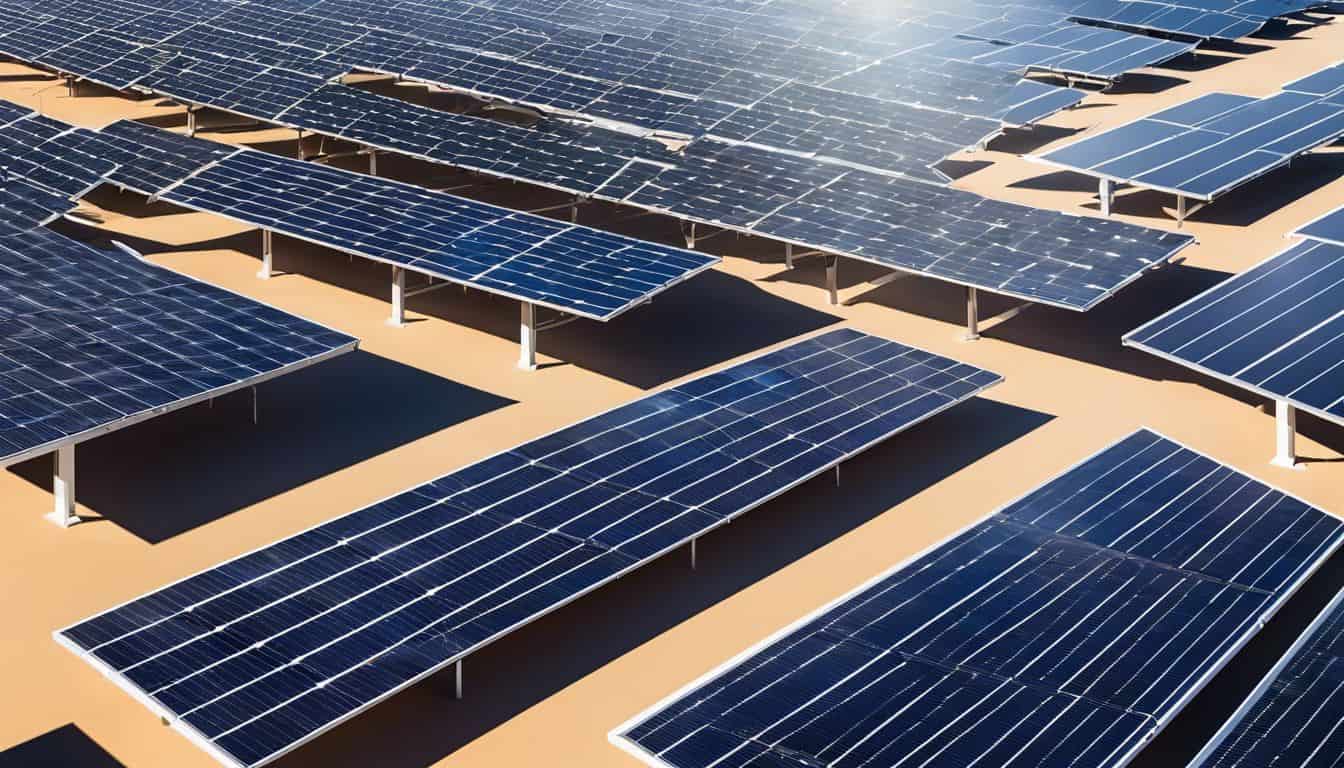Concentrated Solar Power (CSP) technology has emerged as a promising clean, renewable energy generation solution. However, the development and implementation of CSP projects often face significant financial hurdles. This article explores the unique challenges and opportunities in financing CSP projects and highlights innovative approaches to overcome these obstacles.
Unique Financing Challenges for CSP Projects
CSP projects face several financing challenges that set them apart from other renewable energy ventures. The most significant hurdle is the high upfront capital costs of constructing CSP plants. These initial investments can be substantially higher than those required for other renewable technologies like wind or photovoltaic solar.
Additionally, CSP projects typically have longer payback periods compared to other renewables. This extended timeline can make them less attractive to some investors seeking quicker returns. The perceived technology risks associated with CSP, especially for newer designs or in regions with limited CSP experience, can also deter potential financiers.

Financing Structures for CSP Projects
Various financing structures have been developed for CSP projects to address these challenges. The project finance model is commonly used, where a special purpose vehicle (SPV) is created to manage the project and its associated risks. This structure allows for off-balance-sheet financing and can attract a diverse group of investors. However, it often requires complex contractual arrangements and may involve higher transaction costs.
Another approach is corporate finance, where utilities or large corporations directly own and finance CSP projects. This model can leverage the company’s balance sheet and credit rating, potentially reducing financing costs. However, it may limit the pool of available capital and concentrate risks within a single entity.
Key Financial Metrics for CSP Projects
When evaluating CSP projects, investors and lenders focus on several key financial metrics. The Levelized Cost of Electricity (LCOE) is crucial, allowing for comparison with other energy sources. The Internal Rate of Return (IRR) and Debt Service Coverage Ratio (DSCR) are also critical in assessing project viability and risk.
Sources of Financing for CSP Projects
Financing for CSP projects can come from various sources. Equity investment from project developers, institutional investors, and private equity firms often forms the foundation of the capital structure. Debt financing, typically from commercial banks or development finance institutions, is crucial in leveraging equity investments.
Government grants and incentives have supported early CSP projects and continue to play a role in many markets. Green bonds and climate finance mechanisms are emerging as important sources of capital for CSP projects, aligning with global efforts to combat climate change.
Risk Mitigation Strategies
CSP projects often employ various risk mitigation strategies to attract financing. Power Purchase Agreements (PPAs) provide long-term revenue certainty, making projects more bankable. Government guarantees can help address country and policy risks, especially in emerging markets. Insurance and risk transfer mechanisms can also be crucial in managing specific project risks.
Emerging Trends in CSP Financing
The CSP sector is witnessing several emerging financing trends. Hybrid project financing, combining CSP with photovoltaic solar or other technologies, is gaining traction. This approach can enhance project economics and reduce overall risk profiles. Innovative financial instruments, such as green bonds tailored for CSP projects, are also emerging.
The role of international climate finance in supporting CSP deployment is growing, particularly in developing countries. These initiatives provide capital to help build local capacity and demonstrate the viability of CSP technology in new markets.
Future Outlook
The future of CSP financing looks promising. As the technology matures and economies of scale are realized, significant cost reductions are possible. This trend is likely to increase investor confidence in CSP technology. The future grid integration of concentrated solar power will also be crucial in shaping financing opportunities for CSP projects.
As the world increasingly recognizes the need for dispatchable renewable energy sources, CSP’s ability to provide thermal energy storage is becoming more valuable. This feature, combined with ongoing innovations in concentrated solar power, will likely enhance the attractiveness of CSP projects to investors and lenders alike.

Conclusion
Financing CSP projects presents unique challenges but also significant opportunities. As the technology continues to evolve and demonstrate its value in the global energy mix, innovative financing solutions will be crucial for widespread CSP deployment. The sector’s future success will depend on a combination of technological advancements, supportive policies, and creative financial structures.
Importantly, the public acceptance of concentrated solar power will play a critical role in facilitating project development and attracting investment. As communities and policymakers become more familiar with CSP technology and its benefits, financing barriers will likely diminish, paving the way for a cleaner, more sustainable energy future.
FAQS
What is the global potential for Concentrated Solar Power (CSP) energy generation?
CSP has an impressive capacity to generate clean energy on a global scale:
- According to recent studies, CSP projects have the potential to generate over 2,945,926 TWh/year worldwide
- This massive energy potential positions CSP as a key player in the transition to sustainable energy sources
- By harnessing the sun’s power through CSP technology, we can significantly reduce our reliance on fossil fuels and combat climate change
What are some of the technical challenges faced by CSP projects?
While CSP holds great promise, there are several technical hurdles to overcome:
- CSP systems require consistent and direct sunlight to function efficiently, limiting their geographical suitability
- The mirrors and other components used in CSP plants must withstand harsh environmental conditions, such as extreme temperatures and dust
- Maintaining and cleaning these components can be challenging and costly, especially in remote desert locations where many CSP plants are built
- Addressing these technical issues is crucial for the long-term success and reliability of CSP projects
What economic challenges do investors face when financing CSP projects?
Financing CSP projects can be complex due to various economic factors:
- CSP plants have high upfront capital costs compared to traditional energy sources, which can deter potential investors
- The long payback periods associated with CSP investments can be seen as risky, especially in uncertain economic climates
- Fluctuations in energy prices and government policies can impact the profitability and attractiveness of CSP projects
- Overcoming these economic hurdles requires innovative financing models and stable policy support
What opportunities exist for increasing the financial viability of CSP projects?
Despite the challenges, there are several promising avenues for enhancing the financial prospects of CSP:
- Hybridizing CSP with other energy sources, such as natural gas or PV solar, can improve overall plant efficiency and reduce costs
- Developing CSP plants that produce multiple outputs, like electricity and desalinated water, can diversify revenue streams and improve economic viability
- Advancements in thermal storage technologies can extend CSP plant operating hours and increase their value to the grid
- Implementing supportive policies, such as feed-in tariffs or tax incentives, can help level the playing field for CSP and attract more investment
How can technological advancements help address the challenges faced by CSP projects?
Ongoing research and development efforts are crucial for overcoming the obstacles to CSP adoption:
- Innovations like supercritical CO2 power cycles can significantly increase the efficiency of CSP plants, reducing costs and improving performance
- Advanced thermal storage materials and systems can extend the duration of energy storage, allowing CSP to provide reliable power around the clock
- Improved mirror designs and coatings can enhance the durability and reflectivity of CSP components, reducing maintenance requirements
- By continually pushing the boundaries of CSP technology, we can make this clean energy source more competitive and attractive to investors

Leave a Reply